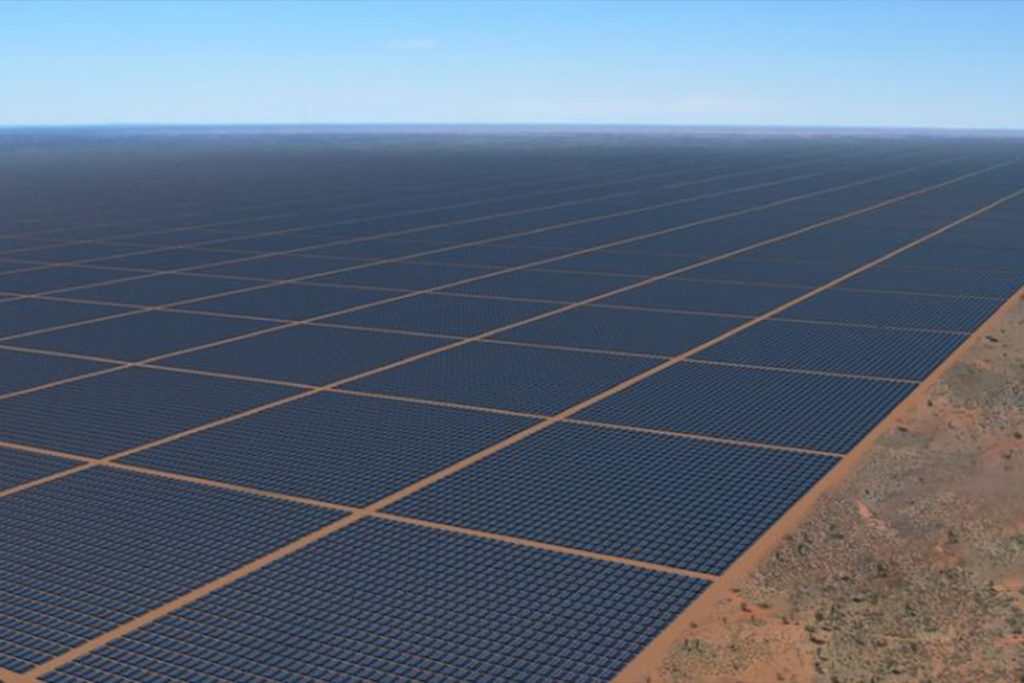
Known as Sun Cable, the world’s largest solar farm will deploy a whooping 10-gigawatt-capacity of solar panels by 2026 in the Australian outback. The $20 billion mega energy project will take up about 12,000 hectares on a cattle station halfway between Alice Springs and Darwin.
Although some of this spectacular amount of energy will be enjoyed by Australians, most of it will be exported to Singapore, where it will meet 20% of the island state’s electricity demand. The project will also involve the longest power cable in the world, as well as the largest battery.
Sun Cable: a triple milestone mega-project

The Sun Cable farm will be so huge (once it’s built), that it will be easily visible from space. In July, Sun Cable was awarded ‘major project’ status by the Morrison government, which essentially means it will fast-track the project,. It has so far attracted investments from billionaires like Andrew Forrest and Mike Cannon-Brookes.
The location of the project was announced on Wednesday, 21 October, by Sun Cable CEO David Griffin, who said the site at Newcastle Waters fits “a few key criteria”.
“It’s on the Adelaide to Darwin rail corridor, which is brilliant for our logistics given the enormous amount of material we’ll have to transport to the site,” he said in a press statement.
“It’s a bit of a balancing act too, because it’s far south enough to get away from the main patch affected by the wet season, so it’s a steady solar resource throughout the year,” he added. “There’s plenty of sun and not many clouds.”
The solar energy generated at Newcastle Waters will then be transported 750 kilometers north to Darwin, where most of it will be stored in the world’s largest battery so it can be transported roughly 3,700 kilometers to Singapore via the world’s longest undersea power cable. This project has the potential to create 1,000 jobs during the construction phase and 300 operational jobs in the long term.
The multi-year renewable project is expected to meet the electricity needs of over one million Singaporeans. This puts Australia in a rather paradoxical position: it is the world’s foremost exporter of coal, but it will also become one of the most important exporters of renewable energy once Sun Cable becomes operational in 2027.
Australia is responsible for about 1.4% of all man-made greenhouse gases in the world. That’s 5% if you count fossil fuels exports. Hopefully, as more projects like Sun Cable become operational in the country, coal’s share of the pot will drop dramatically.


